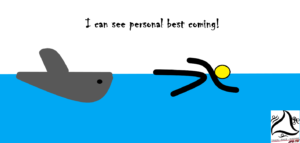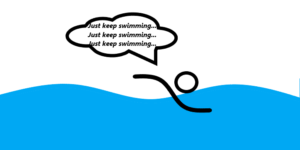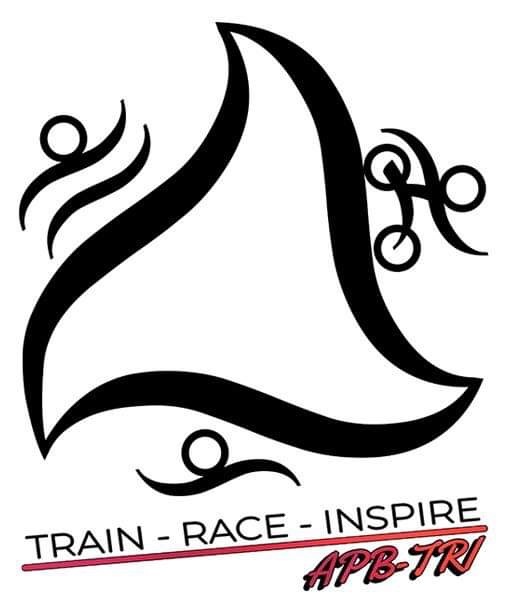I have read many times that swimming tends to be the weakest discipline for triathletes, so I thought I’d write this week how to swim faster.
COVID-19 era has been hard on all of our athletic endeavors, but I doubt any were as impacted as swim workouts. I am sure at least some of you have access to open water where you are allowed to swim. Sadly, that’s not the case for me. I only got access to an overcrowded, short outdoor pool, making it hard to maintain this part of my triathlon preparedness. Now that they are reopening the pools, it’s time to focus on regaining my speed!

Form
As Olympic swimmer Melanie Valerio once said: “He who pulls the most water wins, not the one who moves their arms through the water like a windmill.” And that’s where proper form comes in. I was lucky to have been a competitive swimmer when I was a little kid. It didn’t make me super fast, but it sure taught me the proper form. I know it may sound silly to some and plenty will say ‘I can already swim’, but many triathletes have questionable form, leading to wasted energy and slower speed.
Improving your form completely on your own is challenging to say the least. I have read a professional triathlete saying that when he started, his swim level was ‘won’t drown’ and local coach wouldn’t work with him. So he watched a lot of YouTube tutorials and filmed himself and eventually got good. Actually, more like great. It is a way to go, but I recommend getting a proper coach, if only for a couple of lessons. When deciding if you’re going to pay or go with the free route, always remember: you get what you pay for.
Form tips:
- Head position – look down, not ahead. Keeping your head up increases drag. I know it’s mentally harder during open water swim, but try it for at least part of your swim
- Stop bending your knees – it’s the hardest bad habit in swimming to unlearn, I swear! I still am occasionally guilty of this (see staying mindful…), but it makes a difference, I swear
- Kick shallow – the struggle is real! It’s not a coincidence that I swim a lot faster in a wetsuit. It gives float to my legs. You get least drag if your legs are near surface. Do an experiment: try swimming normally and with a board between your ankles. Now compare your results. I was surprised to find out that I was actually faster without my legs. Something to work on!
- Make your arms work the entire time they are in the water – we all know to pull the water when your hand is in front of us during a stroke. But many then kind of let go and move sloppily for the rest of your body length. That’s just a waste of a move! Push the water behind you!
- Swim straight – I know it sounds ridiculous and obvious, but hear me out! Take a look at kids learning how to swim. You will notice that they frequently move like eels (or snakes) through the water. It creates a ton of drag and increases your distance. If you are a regular reader here, you probably don’t swim like a little kid, but you may still be guilty of this, albeit not as visibly. Work on keeping your body straight when swimming!
Variety of session types
So swimming tends to be the ugly step child for many triathletes. You can’t win a race here, but you sure can lose it. It’s the first and shortest leg, giving you a lot of time to make up for bad performance later on. And that’s how many approach it in training: just enough not to embarrass themselves. However, if you want to get really good, you will need to put more effort into swimming, rather than phoning it in once a week.
If you are trying to just swim once per week, you are likely to stick to base and tempo swims. Those are great, I enjoy those, too. I find something peaceful about them. But add variety:
- Intervals – try swimming as fast as you can. Like with swimming, it will teach your muscle to move that fast and hard. It may also expose some issues with your form
- Arms only/ legs only – this will benefit mostly your form, as it will give you a chance to focus on how you’re moving
- Alternate styles – not a fan, but I heard it helps, so why not?
Equipment
Use that kickboard. Try the paddles. Do a few laps with fins on. Do you know what these have in common? They force you to focus on one aspect of training at a time. Paddles and fins will help you build more muscle because they provide additional resistance. But in my opinion, one of the greatest benefits of working out with paddles is that they are unforgiving on your technique. You get immediate feedback if you’re sticking your hand in at an incorrect angle. And you can definitely feel the difference between an idle stroke and pushing water. Make sure to take advantage of these usually cheap tools to improve your swimming faster.
Then there is pulling a buoy. Or, if you’re doing open water swimming, maybe pull your kid on an inflatable? This will definitely help you build stronger muscle! It reminds me of running with a stroller or pulling a trailer when biking – oh, the relief when you lose that weight! You can go so much faster and so much further!
Supplemental weight training
There are obvious workouts for swimmers, like back, arms and legs. And you should do your squats, bench presses and such – stronger muscle will help you become a faster swimmer. What I haven’t seen frequently mentioned online, but I find to be crucial is core. Just think how many different variations of ‘reduce drag’ there are in this article (and any other on the issue). Reducing drag is, in a nutshell, the art of keeping your body straight. And how do you keep yourself straight as an arrow? By engaging your core and making you that way of course! So keep doing your planks and side planks (and their variations) regularly!
Stretch

It’s a recurring theme in training: stretch. I am not talking about advanced yoga or anything fancy. But you most definitely should stretch some. I have noticed that some swimmers experience swim inefficiencies because they can’t move their arms just so or their body cramps us. This can be easily prevented through regular stretching.
Stay mindful

This is something I struggle with during long swims, especially in the pool. When you’re doing one lap after another, it gets mind numbing. There are no views to admire. Listening to music is hard. You can’t keep monitoring yourself on your watch. It’s just you and your thoughts. I wish I had something ground-breaking to say on this issue, but the matter of fact is that you need to learn to pay attention to your form and pace when you are swimming without losing your mind. During IM70.3 Gdynia, I just counted of my strokes and breaths. It calmed me down and helped stay focused. If you are thusly inclined, sing something in your head. Either way, find a way to provide your own beat.
Keep training and I will see you out there!
